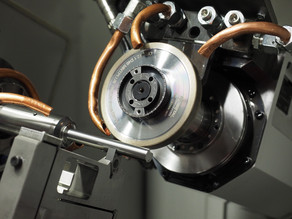Advanced Processing of Additively Manufactured Parts (AD-PROC-ADD)
The Ad‐Proc‐Add project aims at the systematic and comprehensive investigation of additive‐subtractive manufacturing (ASM) process chains in order to achieve a detailed understanding of influences and interdependencies of parameters, strategies and boundary conditions with respect to the material and workpiece properties of additively manufactured (AM) a nd post‐processed parts in various applications. The visionary goal is to achieve the capability to adjust the workpiece properties regarding geometric, surface and subsurface characteristics throughout ASM process chains so that pre‐defined requirements can be fulfilled. This enables a targeted layout and implementation of ASM process chains in various industrial sectors. For this, an international approach of research associations and institutes is chosen, which combines the necessary expertise in the areas of additive manufacturing, material removal processes, process monitoring and control, machinery and equipment, simulation and optimisation as well as energy efficiency analysis. Comprehensive experimental studies regarding interrelationships between parameter settings and influences on the workpiece’s properties in additive and subtractive process steps, correlation analysis, the detailed investigation of physical effects as well as methods for process monitoring and quality inspection are planned within a distributed and interconnected research approach that exploits synergies and capacities of the involved partners in an optimal way. New tool concepts, strategies for 3D‐printing of metal parts, methods for the sophisticated layout of post‐machining processes, system prototypes for monitoring devices and fixtures, as well as new services will be derived from the insights of this project. Furthermore, the new knowledge enables part manufacturers, system and service providers to develop new products with enhanced functionality and allows end‐users to implement ASM process chains with higher productivity and economic as well as ecologic efficiency.
The project results will lead to a digital compendium, based on a new performance measurement system, usable for design and production engineers and service staff. The project will be accompanied by a user committee of SMEs from all relevant market sectors: tool manufacturing, 3D‐Printing equipment, machine tool builders, software and service providers as well as end‐users. The intensive communication with the industrial partners ensures the elaboration of
industrially relevant and usable results.





![[Translate to English:] [Translate to English:]](/storages/isf-mb/_processed_/4/8/csm_Schleifscheiben_8bb5d31229.jpg)